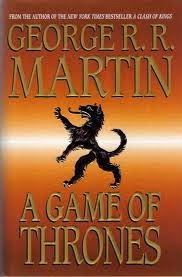My younger daughter caught an infectious disease from her group of theater friends. The disease is called “A Game of Thrones.” You may have heard of this designer contagion created by George R. R. Martin. She binge-watched the first four seasons a couple of weeks ago and I tried to catch some of it with her, but it was too violent for me. Yeah, I know; I’m the guy who watches Reservoir Dogs — the uncut version — a couple of times a year and eats Sonic hamburgers during Sons of Anarchy, but A Game of Thrones is way too over the top for me. I want to talk a bit about it, however, because Thrones didn’t come out of nowhere, and neither did its author.
George R. R. Martin began his career as a science fiction, fantasy and horror author in the mid-1970s, writing short stories, and very good ones they were, and still are. His novella “Sandkings” remains a classic of the genre, surviving as such notwithstanding a truly wretched adaptation in 1996 for the revived edition of The Outer Limits. It was full-length novels that paid the bills, however, so Martin went that route as well. His first, DYING OF THE LIGHT, remains one of the best books I’ve ever read. I even painstakingly hunted down his telephone number — this, in the mid-1970s, before the internet — and spent ten minutes or so telling him just that. He was somewhat speechless, given that the book never quite acquired the commercial success it deserved, but was quite gracious nonetheless. Since then, we didn’t exactly, uh, stay in touch, but he had some ups and downs. “Down” took place in 1983 when his fourth novel, THE ARMAGEDDON RAG, unexpectedly tanked (even though it remains in print to this day). He took to writing television screenplays and continued to write short stories, and even midwifed a multi-author series called Wild Cards which continues to be published. Martin still had a book or two in him however, and some ten years after writing his last novel conceived a series which he titled A Song of Ice and Fire, with the first novel being the now world-famous A GAME OF THRONES, which was ultimately published in 1996. You know, or at least know of, the rest. The television series which has grown out of it has actually caused some people to return to the literary source material, so there is this snake-swallow-tail effect going on, the kind that we authors love most, especially when they happen to us.
I might be wrong, but I doubt that when Martin sat down and began writing A GAME OF THRONES that he envisioned a success even remotely similar to what has occurred. One hopes, realistically, for benevolent notoriety at least, and a living — hopefully a comfortable one — at most. But your name on the cover of Rolling Stone? That’s living large.
There is a lesson here for everyone. If you have an idea inside of you that’s screaming to get out, don’t let your inner gatekeeper hold it prisoner. Get it out there, even if you think that no one will ever regard it with the same wonder that you do. Share. And if you’ve amassed one or a score of rejection slips, try for that score plus one. And two. And three. You may never see your writing adapted for film, but I doubt that Martin thought it would happen, either. I mean, his career was over in 1983. Right? You never know. Maybe in twenty years, someone’s daughter will be binge-watching video adaptations of your work, and might actually read the source material — your book —as well. You never know.

